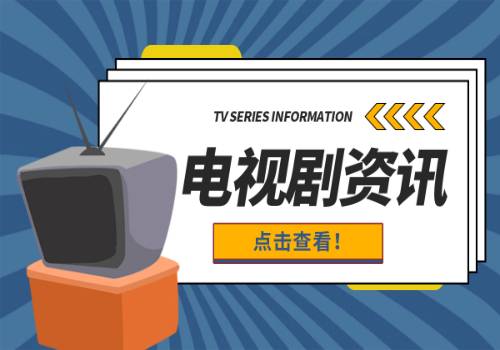环球微资讯!JW Insights: Chinese and Japanese display panel manufacturers team up to challenge South Korea’s long domination in the large-size OLED market
By Greg Gao
(JW Insights) Apr 23 -- China’s display panel makers are cooperating with Japanese manufacturers JDI and JOLED in accelerating the mass production of lower-cost eLEAP OLEDs and printed OLEDs in a challenge to South Korea’s long-time monopoly in the large-size OLED market, said a recent JW Inisghts report.
 (资料图片)
(资料图片)
Despite China"s base in low-cost OLEDs, the country has the potential to change the global large-size OLED panel market and increase its market share of OLED TVs.
China has become the world’s largest LCD panel production base. Meanwhile, South Korea still dominates the large-size OLEDs.
Currently, large-size OLED panels around the world are exclusively supplied by South Korean manufacturers. LG Display (LGD) produces W-OLED, while Samsung Display focuses on QD-OLED. However, the production costs of these two technical directions are relatively high, and they have only found success in the high-end television market.
LGD has enjoyed dominant position in the global large-size OLED panel market for a long time. In 2013 since OLED television became an industry buzzword. Both Samsung Display and LGD began mass-producing large-size OLEDs.
However, Samsung Display chose the wrong technology path, and its large-size OLED yields were too low, forcing the company to temporarily abandon the technology and focus on QLED instead.
Meanwhile, LGD focused on W-OLED technology, continuously improving its production process and increasing yields and production capacity. As a result, W-OLED began to penetrate the high-end television market. In 2022, global OLED TV shipments were about 6.29 million units, and in 2023 it is expected to reach 7.41 million units.
While South Korea continues to strengthen its dominance in the large-size OLED market, China’s panel makers also began to make forays into this area. The country’s display giant BOE has set up a trial line in Hefei, central China’s Anhui Province, for W-OLED and printed OLED. It has developed the world’s first 55-inch 8K printed OLED, 95-inch 8K W-OLED, and 55-inch 8K printed AMQLED.
TCL Technology, another display titan in China, established the National Printing and Flexible Display Innovation Center and invested in a 4.5-generation printed OLED trial line in Guangzhou, southeastern China’s Guangdong Province, through its subsidiary. The company has also developed a 31-inch QD-OLED, 31-inch electroluminescent diode (QLED), 31-inch printed foldable OLED, and 65-inch 8K printed OLED.
Other Chinese display panel manufacturers such as HKC(惠科), Visionox(维信诺) are also making trying to enter the large-size OLED market.
If Chinese manufacturers follow the W-OLED or QD-OLED technology route, not only will it be difficult to avoid the relevant patents of South Korean companies, but they will also face the high costs of the technology.
Large-size OLED panels require differentiated process solutions with lower costs, so printing OLEDs, eLEAP OLEDs, etc., have become important directions for Chinese panel makers. They cooperated with Japanese manufacturers, with long-term technology accumulation in printed OLED and eLEAP OLED.
In 2020, TCL CSOT(TCL华星光电) signed an investment agreement with JOLED, a Japanese display technology company incorporated in 2015 as the result of a consolidation of the OLED business units of Panasonic and Sony, to invest Ұ 30 billion($223.6 million) in JOLED and obtain a 10.76% stake in the company. In the past two years, TCL CSOT has acquired product development and process technology accumulation on the JOLED production line, obtained patent authorization related to printed OLED, and developed the world’s first 65-inch 8K printed OLED sample.
On April 7, HKC and JDI(Japan Display Inc) signed a memorandum of understanding (MOU) to establish a strategic alliance. The two parties will work together to carry out long-term and comprehensive cooperation in next-generation eLEAP OLED, joint R&D center, and high-end automotive panel business. They jointly built the world’s most advanced eLEAP OLED panel factory, aiming to start mass production in 2025.
The total investment for the joint project could amount to hundreds of billions of yen, the Japanese firm said. HKC will cover the costs of factory construction while JDI will provide the expertise for manufacturing the product.
If TCL CSOT’s printed OLEDs and HKC’s eLEAP OLEDs can be successfully mass-produced, it will not only break South Korea’s domination in large-size OLEDs, but also may even further lead the way, an industry analyst pointed out.
However, Chinese panel makers are also facing daunting technology challenges. The mass production of printed OLEDs is not progressing smoothly, eLEAP OLED is still in the testing stage. Chinese makers, including TCL CSOT and HKC, still have a long way to go.
- 环球微资讯!JW Insights: Chinese and Japanese display panel manufacturers team up to c
- 环球新消息丨路缘石匝道图解_匝道是什么意思图解
- 加拉帕戈斯化|热门
- 广州天河公园地图全图_广州天河公园地图 天天聚看点
- 今日热议:小马过河故事文字版_小马过河故事全文
- 足金现在多少一克(2023年4月23日)
- 忘忧镇的小茶馆 第三十七章 毕业与别离(1)
- 注意!快可电子将于5月19日召开股东大会_焦点讯息
- 每日热文:野心浮现?林靖恩拒为丈夫送葬,欲携千万改嫁小鲜肉,网友:支持
- 哈姆:我们的球迷真的无与伦比 我们感受到了他们的热情 世界热点评
- 环球微资讯!JW Insights: Chinese and Japanese display panel manufacturers team up to c
 ByGregGao(JWInsights)Apr23--China’sdisplaypanelmak2023-04-23 18:47:59
ByGregGao(JWInsights)Apr23--China’sdisplaypanelmak2023-04-23 18:47:59 - 世界微速讯:麻梨疙瘩手把件怎么样盘玩保养_麻梨疙瘩手把件
 1、木质东西都怕水所木质品商家都打蜡防裂二增加卖相麻梨疙瘩北京特产北京属于气候比较干燥且风麻梨疙瘩密2023-04-23 18:04:23
1、木质东西都怕水所木质品商家都打蜡防裂二增加卖相麻梨疙瘩北京特产北京属于气候比较干燥且风麻梨疙瘩密2023-04-23 18:04:23 - 环球新消息丨路缘石匝道图解_匝道是什么意思图解
 1、匝道,又称引道,是工程学上的术语,通常是指一小段提供车辆进出主干线(高速公路、高架道路、桥梁及行车2023-04-23 18:07:44
1、匝道,又称引道,是工程学上的术语,通常是指一小段提供车辆进出主干线(高速公路、高架道路、桥梁及行车2023-04-23 18:07:44 - 【环球新视野】黄金9999价格今天多少一克(2023年4月23日)
 黄金9999价格今天多少一克(2023年4月23日)2023-04-23 18:00:10
黄金9999价格今天多少一克(2023年4月23日)2023-04-23 18:00:10 - i黄金9999价格今天多少一克(2023年4月23日)|环球头条
 i黄金9999价格今天多少一克(2023年4月23日)2023-04-23 18:03:24
i黄金9999价格今天多少一克(2023年4月23日)2023-04-23 18:03:24 - 苹果手机wifi打不开显示隔空投送_苹果手机wifi打不开 环球百事通
 1、苹果手机wifi打不开,可以是以下几个原因:1 猛烈撞击(摔在地上等)导致电路焊点出现虚焊;2 进水。2、2023-04-23 17:58:01
1、苹果手机wifi打不开,可以是以下几个原因:1 猛烈撞击(摔在地上等)导致电路焊点出现虚焊;2 进水。2、2023-04-23 17:58:01 - 加拉帕戈斯化|热门
 1、加拉帕戈斯化的是市场而不是游戏。2、日本能做出任何风格的游戏,甚至是让欧美玩家欣赏的美式游戏,在输2023-04-23 17:56:05
1、加拉帕戈斯化的是市场而不是游戏。2、日本能做出任何风格的游戏,甚至是让欧美玩家欣赏的美式游戏,在输2023-04-23 17:56:05 - 智高Gigo_对于智高Gigo简单介绍
 1、智高Gigo隶属于智高实业股份有限公司旗下科学教具及玩具品牌,专注“科学教具”的全产业链研发、制造、2023-04-23 17:38:45
1、智高Gigo隶属于智高实业股份有限公司旗下科学教具及玩具品牌,专注“科学教具”的全产业链研发、制造、2023-04-23 17:38:45 - 即时看!智驰防恶意点击系统7.5_对于智驰防恶意点击系统7.5简单介绍
 1、智驰防恶意点击系统7 5是专为企业竞价排名推广网站研制开发的用于阻止恶意点击行为的网络管理平台。文章2023-04-23 17:42:40
1、智驰防恶意点击系统7 5是专为企业竞价排名推广网站研制开发的用于阻止恶意点击行为的网络管理平台。文章2023-04-23 17:42:40 - 侠盗猎车手4自由城之章秘籍_侠盗猎车手4自由城之章秘籍大全
 1、游戏秘籍游戏中打开Niko的电话(按↑),拨打以下电话即可得到对应秘籍效果。2、号码作用482-555-01002023-04-23 17:31:41
1、游戏秘籍游戏中打开Niko的电话(按↑),拨打以下电话即可得到对应秘籍效果。2、号码作用482-555-01002023-04-23 17:31:41



